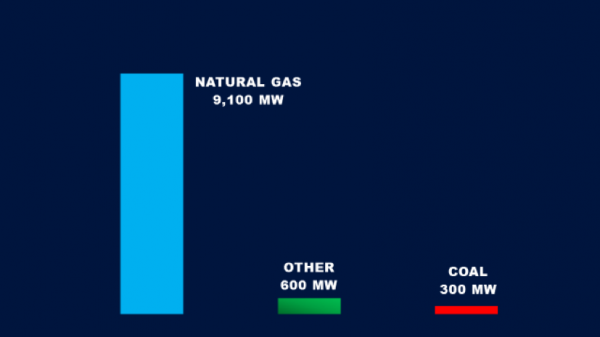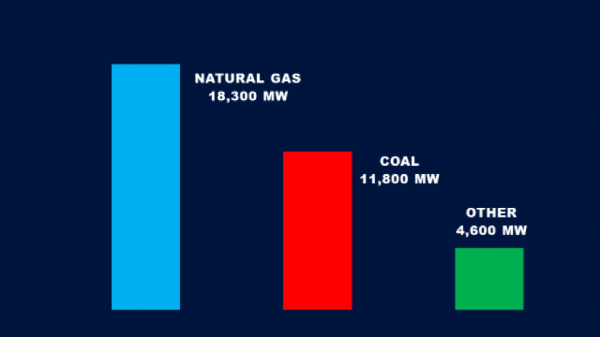Recently, we wrote a blog showing how PJM relied on its coal fleet during the so-called Bomb Cyclone. Since we wrote the PJM blog, we’ve reviewed similar data from MISO (PDF). These two RTO/ISOs collectively include 127,000 megawatts (MW) of coal-fueled generating capacity, roughly half the nation’s coal fleet[i].
During the seven days of cold weather that constituted the Bomb Cyclone, MISO’s electricity demand peaked at 104,700 MW on January 2. On that day, coal was responsible for 42% of the region’s electricity[ii]. PJM’s peak electricity demand was 138,500 MW on January 5. On that day, coal provided 37% of PJM’s electricity.
Both grid operators provided data on forced (unplanned) outages caused by fuel supply problems, as well as forced outages for all other reasons. To illustrate the performance of different electricity resources, we summed the MISO outages on January 2 and the PJM outages on January 5, days when outages could be the most problematic.
Fuel Supply Outages
Chart 1 shows that fuel supply problems caused a total of 10,000 MW of forced outages on the two respective days of peak electricity demand. More than 9,150 MW of gas-fueled generation (4,400 MW in PJM and 4,750 MW in MISO) experienced forced outages due to fuel supply problems. In short, gas was responsible for more than 90% of forced outages caused by fuel problems. Other sources experienced 600 MW of outages (less than 100 MW in PJM and 500 MW in MISO) due to fuel problems. The coal fleet experienced 310 MW of outages (310 MW in PJM and none in MISO) due to fuel problems. (For simplicity, we have rounded the numbers in this blog.)
All Outages
Chart 2 shows that all forced outages totaled 34,700 MW on the two respective days of peak electricity demand. Natural gas was number one with 18,300 MW of forced outages (9,300 MW in PJM and 9,000 MW in MISO). Coal experienced 11,800 MW of outages (6,100 MW in PJM and 5,700 MW in MISO). Other sources experienced 4,600 MW of outages (1,500 MW in PJM and 3,100 MW in MISO).
Chart 1. Forced Outages Due to Fuel Supply Problems
Chart 2. All Forced Outages
What’s our point?
On both days that demand for electricity peaked, coal was called on by PJM and MISO to provide more electricity than any other source. The data from both grid operators demonstrate why the coal fleet is important and also why we should be cautious about relying too much on natural gas to generate electricity. Unfortunately, some in the gas industry have misinterpreted our analyses as “attacks” on natural gas. To the contrary, we wholeheartedly support a diverse electricity portfolio because each electricity resource has an important role to play. No single resource is a silver bullet that provides all the attributes necessary for affordable electricity and a reliable and resilient electric grid. For that reason, we need to maintain a healthy mix of resources that includes the coal fleet.


